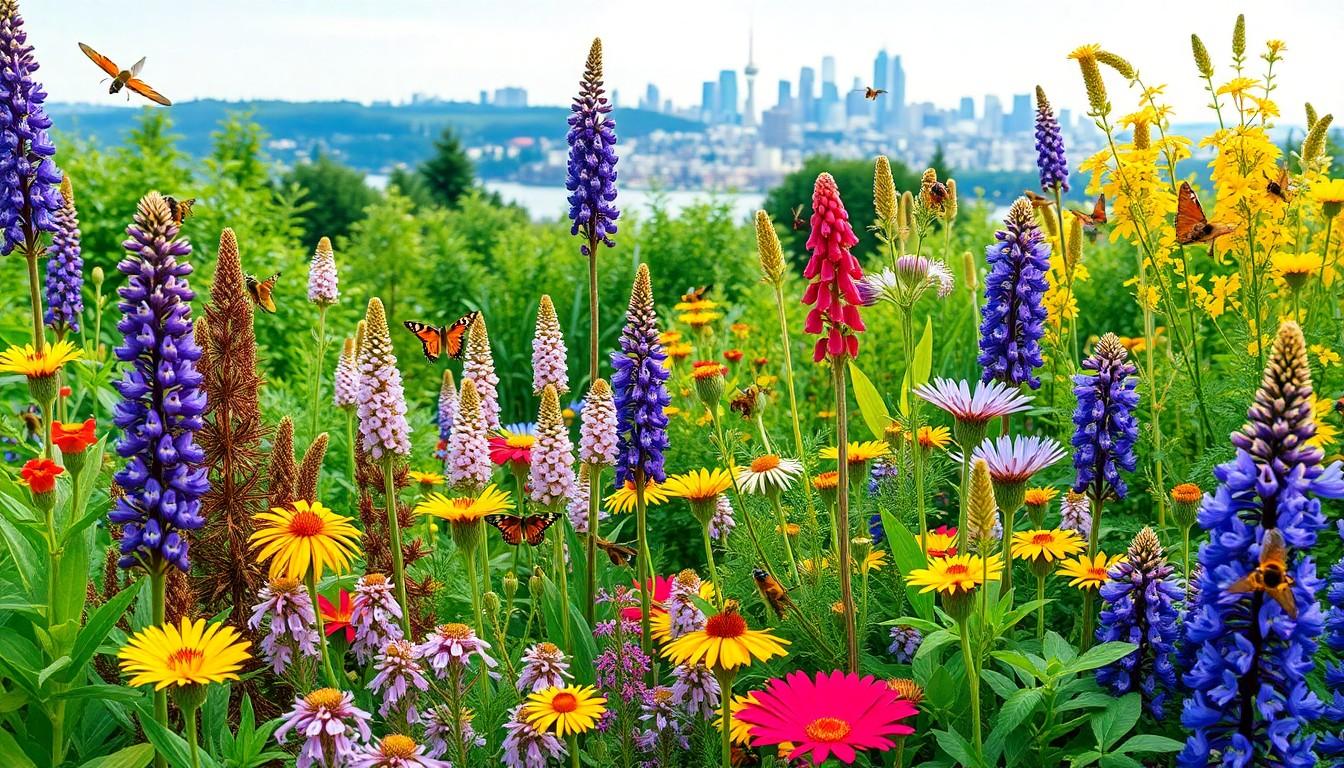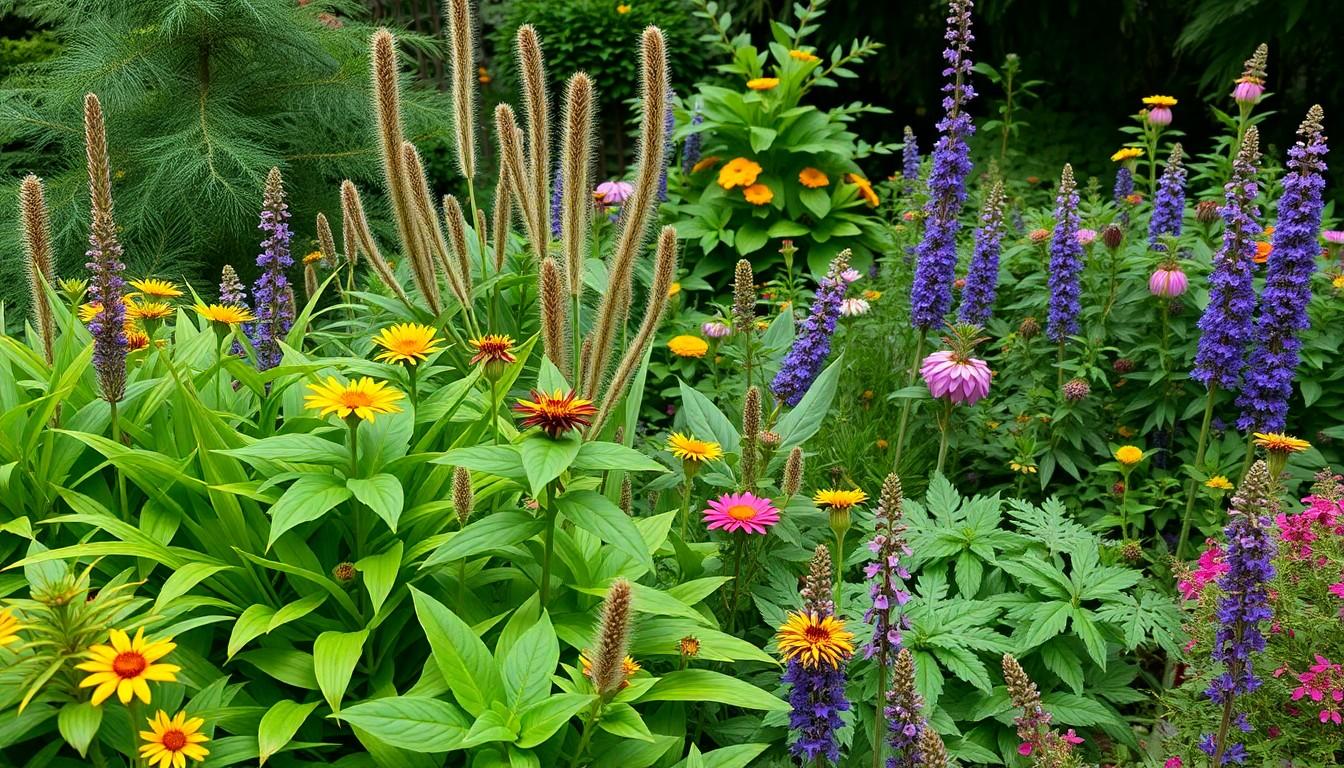Phone:
(701)814-6992
Physical address:
6296 Donnelly Plaza
Ratkeville, Bahamas.

Seattle’s lush landscapes are more than just a pretty backdrop; they’re a thriving ecosystem brimming with native plants that deserve the spotlight. Imagine strolling through a garden where every bloom tells a story of resilience and adaptation. These local wonders not only beautify the city but also provide crucial habitats for wildlife and help maintain the delicate balance of nature.
But let’s face it—who wouldn’t want a garden that practically takes care of itself? By embracing Seattle’s native plants, gardeners can enjoy vibrant colors and textures while reducing maintenance and water usage. It’s like having a green thumb without the stress of a full-time job. So, whether you’re a seasoned horticulturist or a budding enthusiast, diving into the world of Seattle’s native flora is a decision that’ll make both your garden and the environment flourish.
Seattle’s native plants adapt to the local environment, thriving in the Pacific Northwest’s climate. These plants play a critical role in maintaining biodiversity and providing habitat for various wildlife species. Many of these plants are drought-resistant, reducing the need for supplemental irrigation.
Common native species include the Western red cedar, salal, and Oregon grape. The Western red cedar serves as an iconic tree that supports local ecosystems. Salal offers lush ground cover and produces berries enjoyed by birds and other wildlife. Oregon grape thrives in wooded areas, flaunting vibrant yellow flowers in spring that attract pollinators.
Incorporating native plants into gardens can result in lower maintenance requirements. They require less water, making them ideal for sustainable gardening. Gardeners often notice that these plants naturally resist pests and diseases more than non-native varieties.
Additionally, utilizing native plants enhances local landscapes with native colors and textures. This approach fosters a connection between people and their environment, promoting appreciation for local flora. Many community organizations advocate for the use of native plants, emphasizing their ecological benefits and aesthetic appeal.
Exploring Seattle’s native plant nurseries provides opportunities for gardeners to collect diverse species. Various resources exist for identifying and sourcing native plants, assisting gardeners in making informed choices. Engaging with local gardening groups offers support and knowledge sharing about these valuable plants.

Native plants significantly contribute to the health of local ecosystems. Their integration into gardens enhances biodiversity and supports wildlife.
Native plants provide essential habitat for pollinators, birds, and beneficial insects. They improve soil health, increasing resilience against erosion. Drought resistance enhances their survival in fluctuating climates. Additionally, these plants require less water and fewer chemical inputs, reducing environmental impact. Species like Western red cedar and salal effectively contribute to carbon sequestration, helping to mitigate climate change. Participants in gardening initiatives often observe an increase in local fauna, reinforcing the importance of native flora.
Native plants offer diverse colors and textures that enhance garden beauty. Varieties such as Oregon grape display vibrant blooms that attract visual interest. Seasonal changes in native plant foliage create dynamic gardens year-round. Local species naturally blend into the landscape, maintaining a sense of place in Seattle. Using these plants supports a cohesive aesthetic, resonating with regional character. Incorporation of native plants often leads to lower maintenance needs, allowing gardeners to enjoy their spaces without excess effort.
Seattle showcases a remarkable array of native plants, contributing to its rich biodiversity and stunning landscapes. Below are some common varieties found in the region.
Western red cedar stands tall as a cornerstone of Seattle’s ecosystem. This tree provides habitat for various birds and insects. Salal thrives in shady areas and offers dense foliage, producing edible berries that attract wildlife. Oregon grape, another popular shrub, features yellow blooms that transform into vibrant blue berries. The native red-flowering currant bursts into striking pink flowers, signaling spring and drawing pollinators. These trees and shrubs not only support local fauna but also add beauty to gardens throughout Seattle.
Seattle’s wildflowers paint the city with color during blooming seasons. Common camas, known for its blue-purple flowers, grows in meadows and provides nectar for pollinators. The sun-loving seaside daisy adds charm with its bright yellow petals, attracting butterflies to gardens. Another appealing wildflower, Lupine, presents vibrant spikes of blue or purple, enhancing the landscape. Furthermore, the native goldenrod flourishes in meadows and attracts beneficial insects. Wildflowers contribute to soil health while creating visually striking displays across Seattle’s natural areas.
Habitat restoration in Seattle emphasizes the significance of native plants in revitalizing local ecosystems. This work supports wildlife, enhances biodiversity, and preserves natural beauty.
Numerous local organizations focus on habitat restoration projects across Seattle. The Cascade Land Conservancy engages communities through educational workshops and planting events. EarthCorps recruits volunteers for ecological restoration, tackling invasive species and improving native plant habitats. Native Plant Society promotes conservation efforts by collecting seeds and propagating plants at local nurseries. These organizations play vital roles in fostering a stronger connection between residents and their natural surroundings.
Community involvement strengthens Seattle’s habitat restoration initiatives. Local residents frequently participate in restoration events, contributing to the planting and maintenance of native gardens. Neighborhood groups mobilize to remove invasive plants, creating space for native species to thrive. Workshops educate citizens about the ecological benefits of these plants, encouraging them to incorporate native flora into their gardens. Volunteering for local projects fosters a sense of stewardship and creates lasting relationships among community members dedicated to preserving their environment.
Native plants in Seattle face numerous challenges that threaten their survival. Habitat loss significantly impacts these species, as urban development often replaces natural ecosystems with concrete and other structures. Invasive species pose another major threat; non-native plants can outcompete local flora for resources, leading to declines in native populations.
Pollution also plays a critical role. Waterways contaminated with toxins adversely affect plant health and disrupt local ecosystems. Climate change further exacerbates these issues by altering rainfall patterns and temperatures, which stresses native plants and can lead to reduced biodiversity.
Limited public awareness contributes to the problem. Many residents overlook the importance of native plants and favor ornamental species that do not support local wildlife. Consequently, this lack of understanding can result in gardens that fail to benefit the ecosystem.
Additionally, resource availability often restricts conservation efforts. Nonprofits and organizations dedicated to preserving native species may struggle with funding and volunteer support, reducing their ability to manage restoration projects effectively. Unmanaged growth of invasive plants in natural areas complicates the restoration process, making it challenging to reestablish native flora.
Addressing these challenges requires a multifaceted approach. Community engagement through educational programs enhances awareness and promotes the value of native plants. Local gardening groups can also rally support, encouraging residents to plant native species in their gardens and participate in conservation efforts.
Collaboration with local governments and organizations can propel effective habitat restoration programs. Engaging volunteers in invasive species removal fosters a sense of stewardship, empowering residents to take action in their communities. By understanding and addressing these challenges, native plants in Seattle can thrive in their ecosystems.
Embracing Seattle’s native plants is essential for nurturing the local ecosystem. These plants not only beautify gardens but also support wildlife and promote biodiversity. By choosing native species, gardeners can enjoy vibrant landscapes with minimal maintenance while contributing to environmental health.
Community involvement is vital in restoring habitats and raising awareness about the significance of native flora. As residents engage in gardening initiatives and conservation efforts, they strengthen their connection to nature and foster a sense of stewardship. Together, they can ensure that Seattle’s native plants thrive for generations to come.